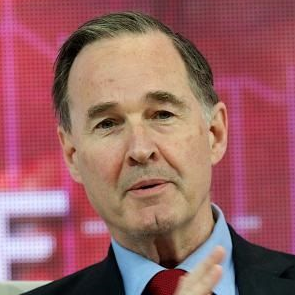Is the U.S. Dollar from Texas — or New York?
Why does it matter for the dollar where the U.S. Secretary of the Treasury comes from?
June 4, 2003
Is the world's most important currency really no more then a question of geographic bias? My answer is an emphatic yes. In fact, it's not just an accident.
The New York-Texas divide reflects ancient divisions in American history — extending back to the gold standard era of the late 19th century.
In that period, the western states always supported populist candidates who opposed the gold standard. And they favored dollar devaluation to bolster commodity prices.
In contrast, the eastern states were dominated by financial conservatives who favored sound money — and protecting America's link to the global capital market (read: London) through the gold standard.
In the modern era, the big advocates of a soft U.S. dollar were John Connally (who served as President Nixon's Treasury Secretary from 1971-1972), James Baker (under Ronald Reagon, 1985-1988), and Lloyd Bentsen (with President Clinton, 1993-1994).
John Connally actually was the most historic figure among these three Texans. He introduced the era of floating exchange rates during 1971 — when the Nixon administration severed the dollar's long standing link to gold.
In the context of the dollar, Mr. Baker was not far behind, though. He organized a large dollar devaluation at a G-7 summit at the Plaza Hotel in New York in 1985.
Mr. Baker aimed to reduce the country's burgeoning trade deficit — and constrain protectionist forces in the U.S. Congress. Mr. Bentsen, too, advocated a soft dollar in order to bolster U.S. exports.
When George W. Bush — himself a Texan — became U.S. President in 2001, it was unclear whether he would align himself with the Texas or New York tradition in exchange rate policy.
His choice for Treasury Secretary was an industrialist from Pittsburgh. Paul O'Neill appeared to be susceptible to the desires of manufacturing companies for a cheap currency to bolster trade — even though he had worked as a senior U.S. budget official earlier in his career. Before long, Mr. O'Neill was thought to be of the Texas school.
But the President's long-time chief economic advisor in the White House, Larry Lindsey, was aligned to the New York financial community — and he advocated a strong dollar.
Both Larry Lindsey and Paul O'Neill resigned from the Bush Administration in December 2002 — and left behind a vacuum on the issue of exchange rate policy.
The new Treasury Secretary, John Snow, has filled the gap by aligning himself firmly with the Texas tradition in U.S. political economy.
He publicly abandoned the strong dollar policy bequeathed by the East-coast Clinton Treasury Secretaries, Robert Rubin (1995-1999) and Lawrence Summers (1999-2001).
It is unclear why Mr. Snow decided to pursue such a high-risk strategy. As the dollar has been declining for over a year, he may have decided that he should simply accept the market's verdict — rather than continuing to pay homage to the idea of a strong dollar.
He may also have been encouraged to accept a weak dollar because of the financial market's new obsession with the risk of deflation.
If deflation is a possibility, the dollar's decline would pose far fewer risks than in the past. It is also possible that Mr. Snow decided to accept a weak dollar because it is actually a by-product of the administration's own policies.
First, the markets are concerned that the Bush Administration’s fiscal policy could boost the federal budget deficit to $400-500 billion — and create a domestic savings imbalance that will expand the current account deficit to $600 billion.
Second, the markets are alarmed that the United States is embarking upon an imperialist foreign policy that will have unknown consequences for its fiscal position, foreign trade and relationships with other countries.
In the heyday of empire, the United Kingdom ran large current account surpluses. There is no precedent for a country playing the role of global superpower with a large external payments deficit.
With the United States pursuing a more unilateralist foreign policy, it will have to absorb all of the costs without help from traditional allies.
Finally, the markets perceive a vacuum at the center of U.S. economic policy-making. In this administration, power is highly centralized at the White House. The only highly visible cabinet ministers are at the Departments of State and Defense.
In contrast, during much of the Clinton Administration, the U.S. dollar benefited from the perception that there was a strong Treasury Secretary who commanded the confidence of the president — and understood the risks of a falling currency.
Still, the Bush Administration is determined to pursue aggressive fiscal and monetary policies in order to insure a healthy recovery during the run-up to the 2004 presidential election.
The new weak dollar policy is designed to put pressure on other countries to reinforce this domestic growth agenda.
If that comes to pass, Mr. Bush will not only win re-election next year. There could be Bush bubbles in many asset markets during late 2004 and 2005.
Read previous
Iraq, the Dollar and the Euro
June 2, 2003
